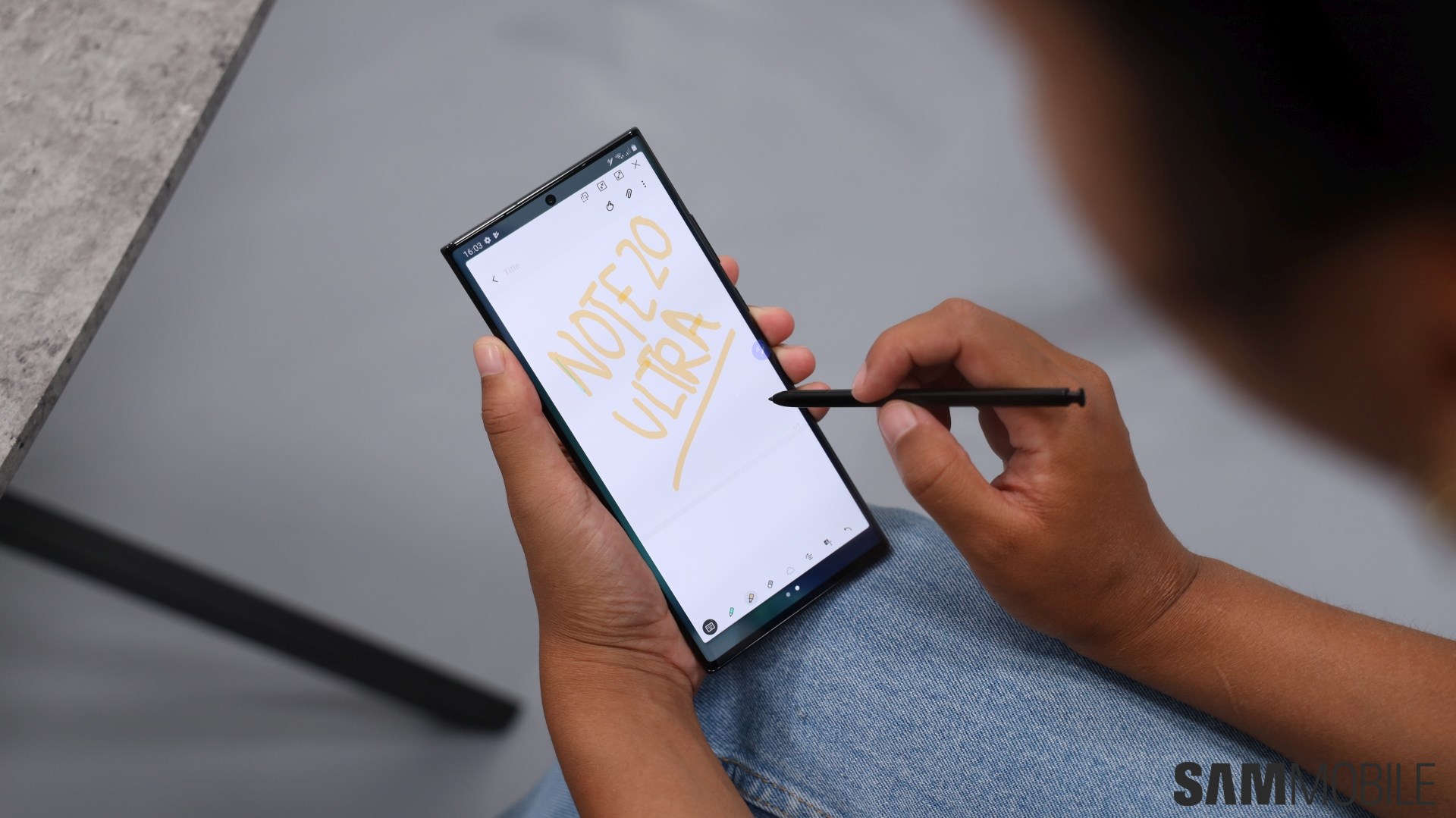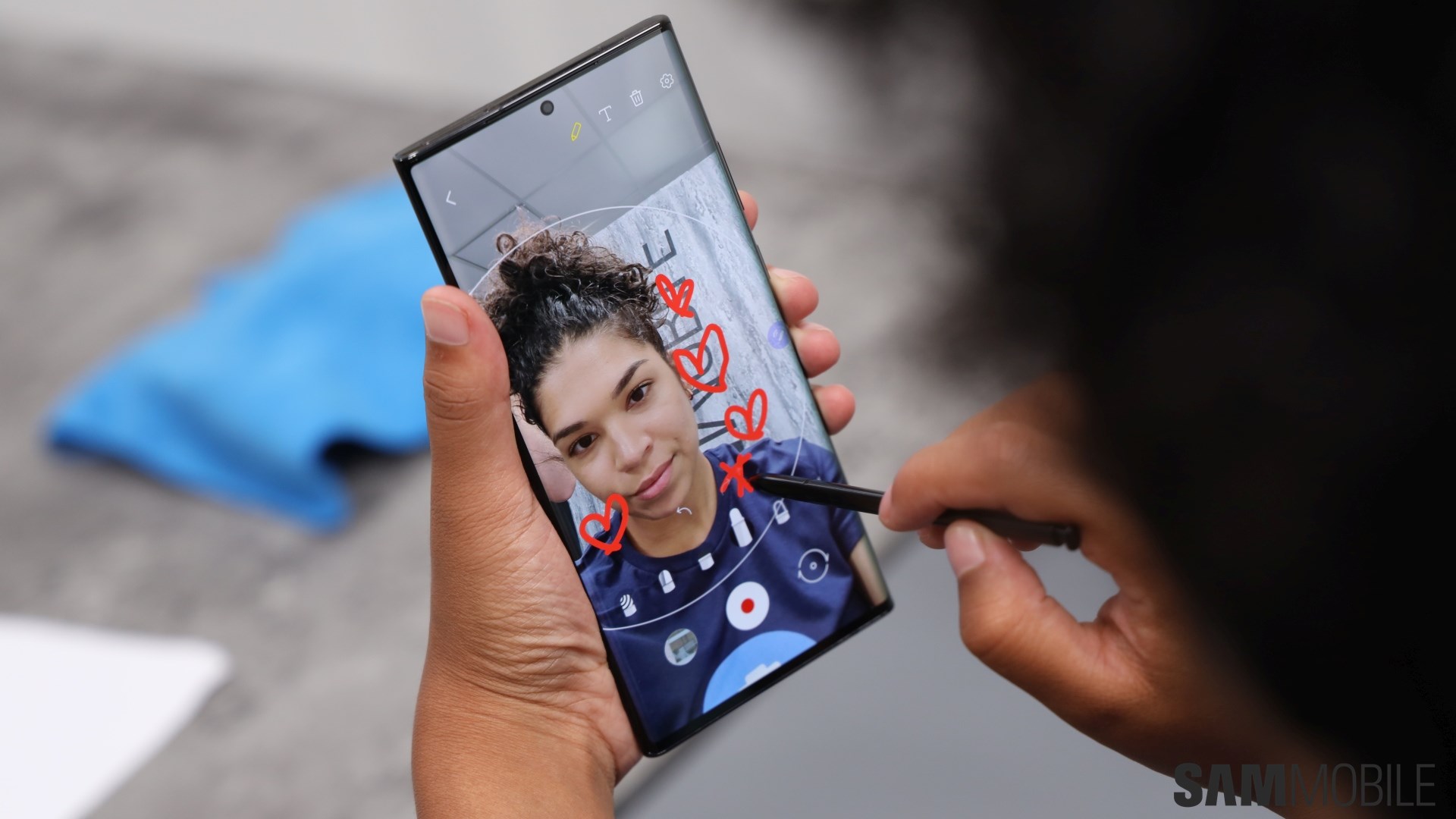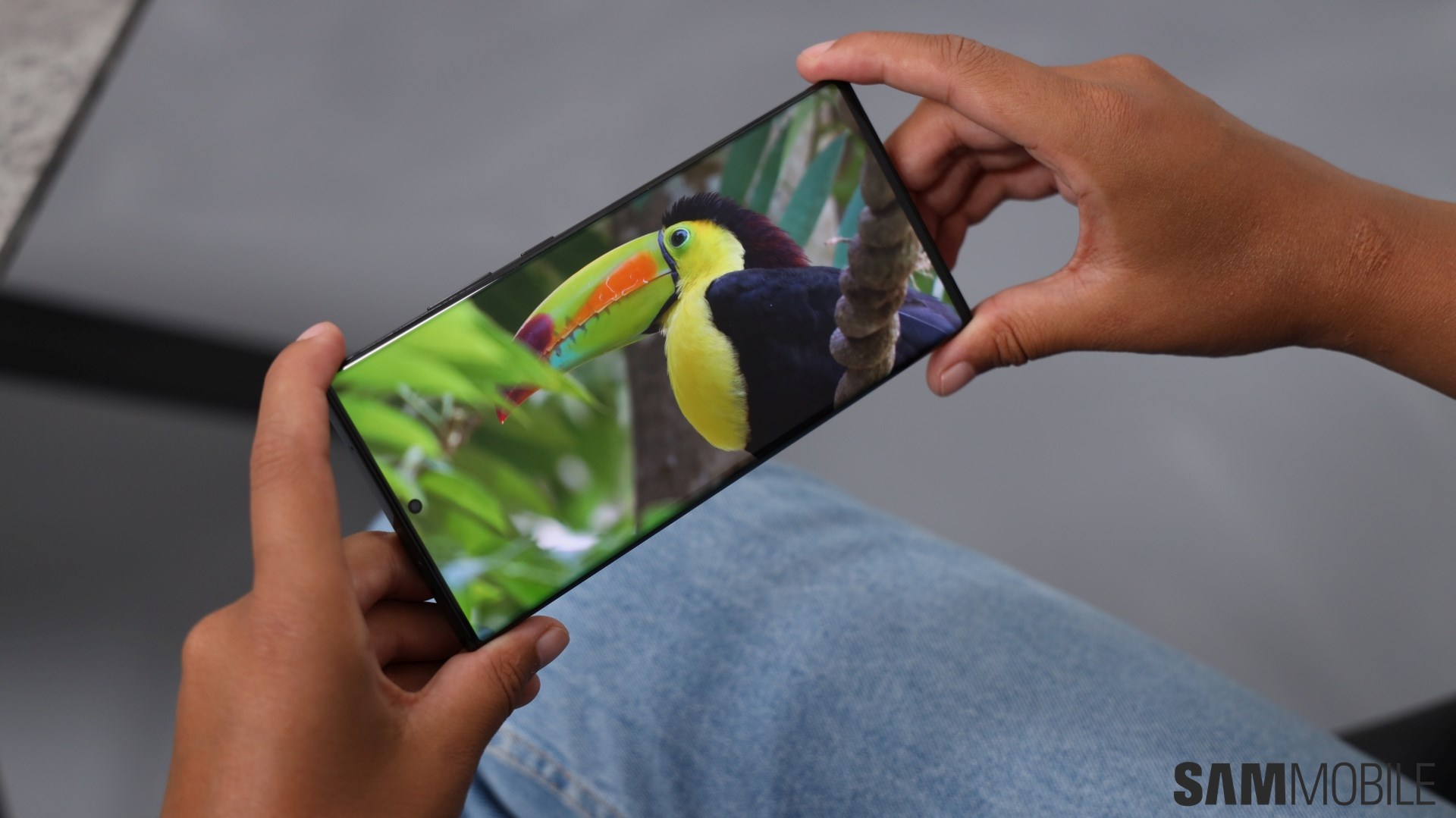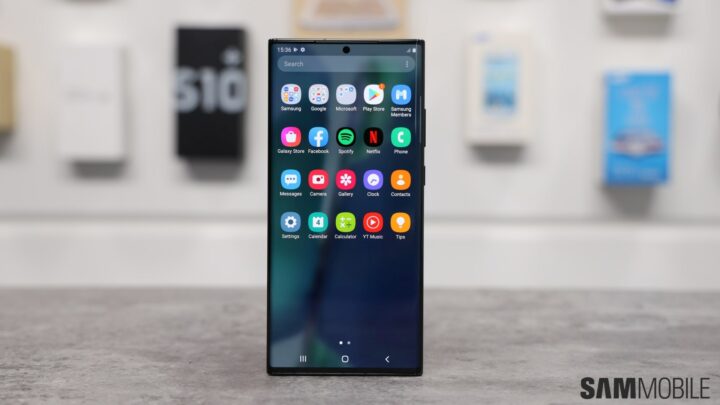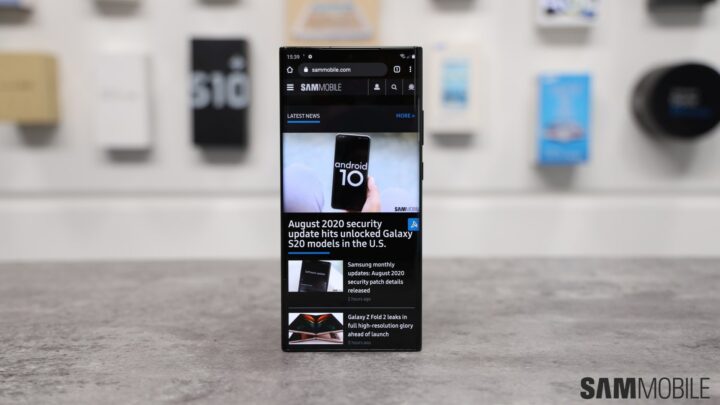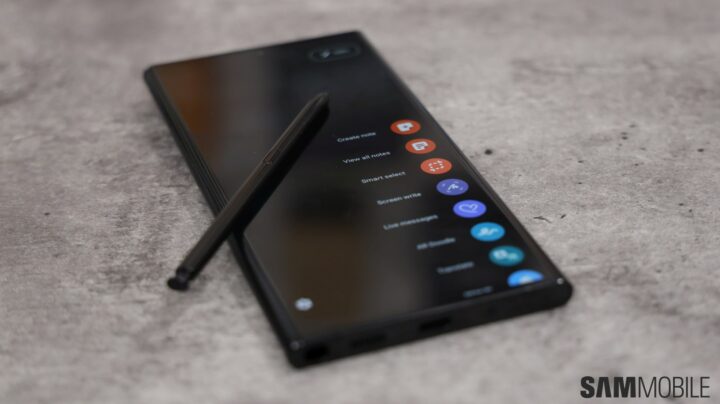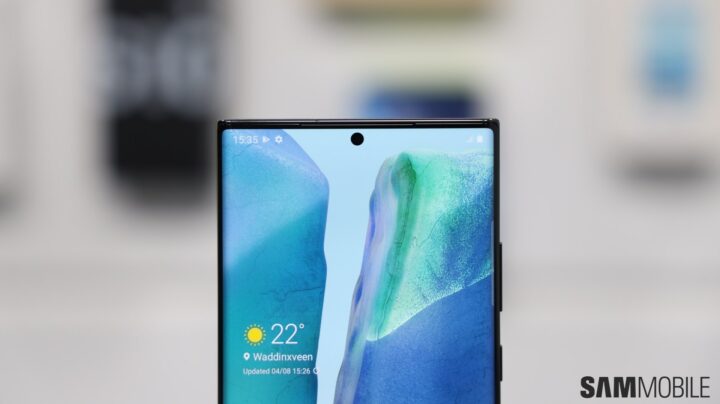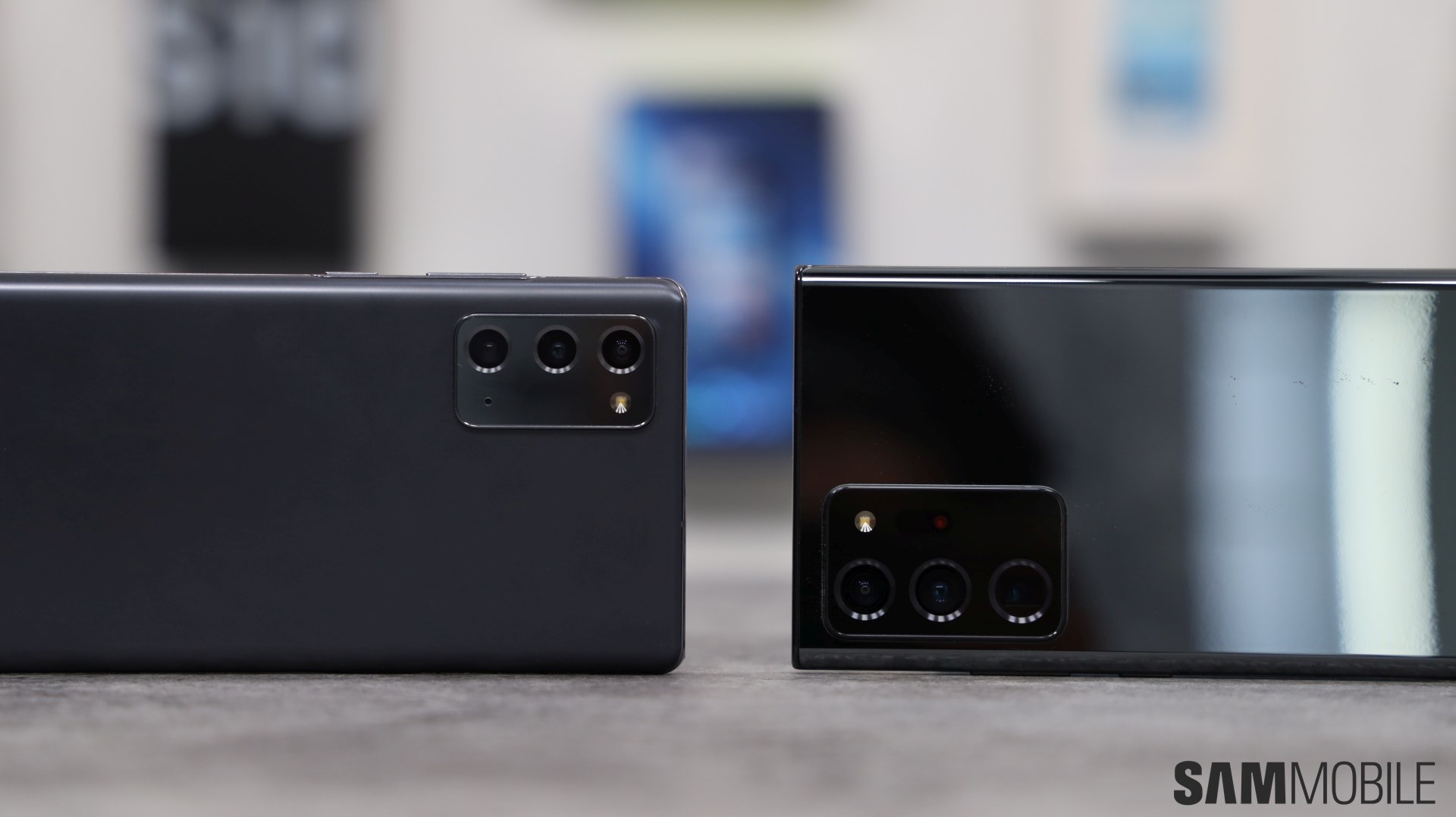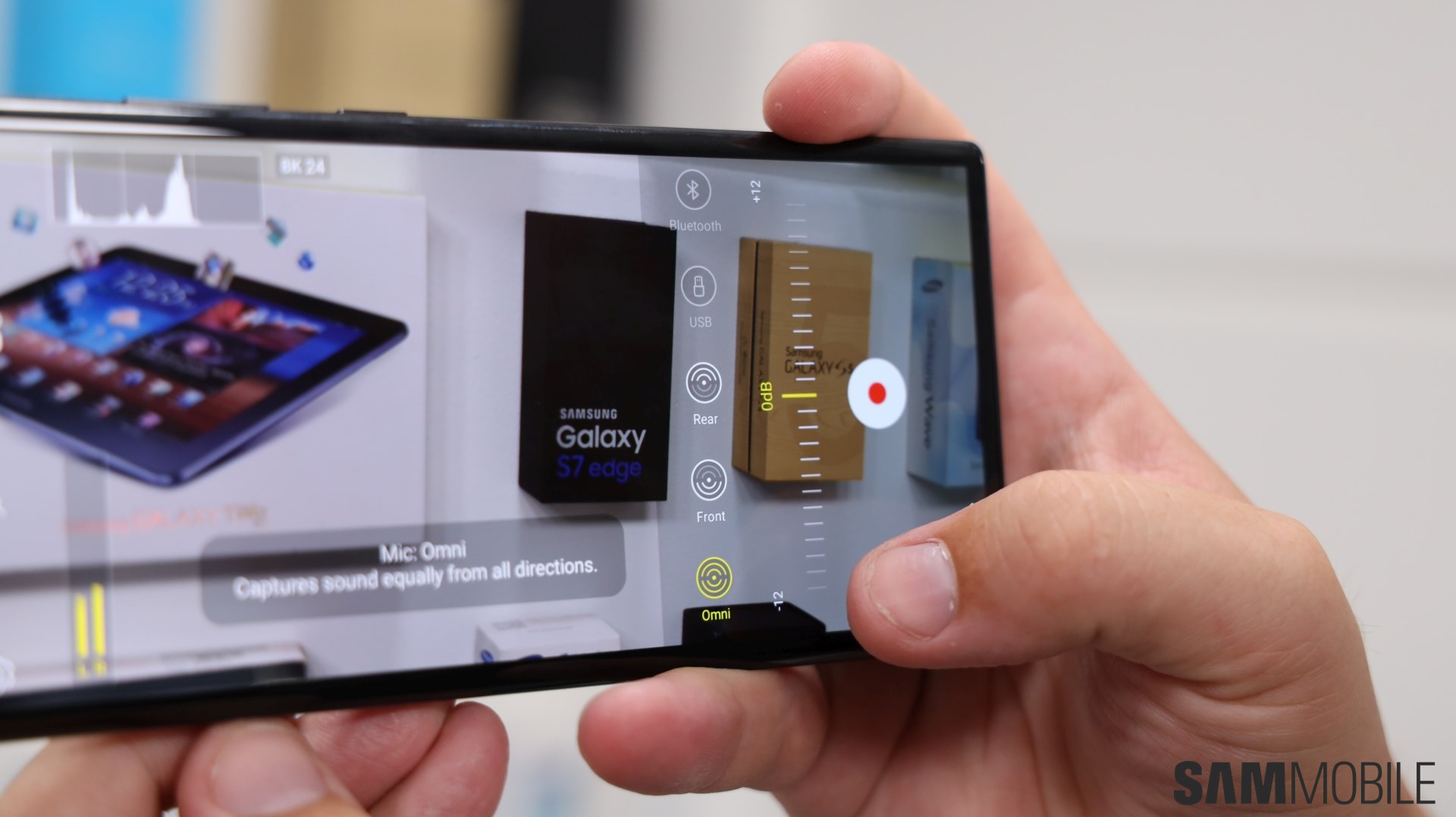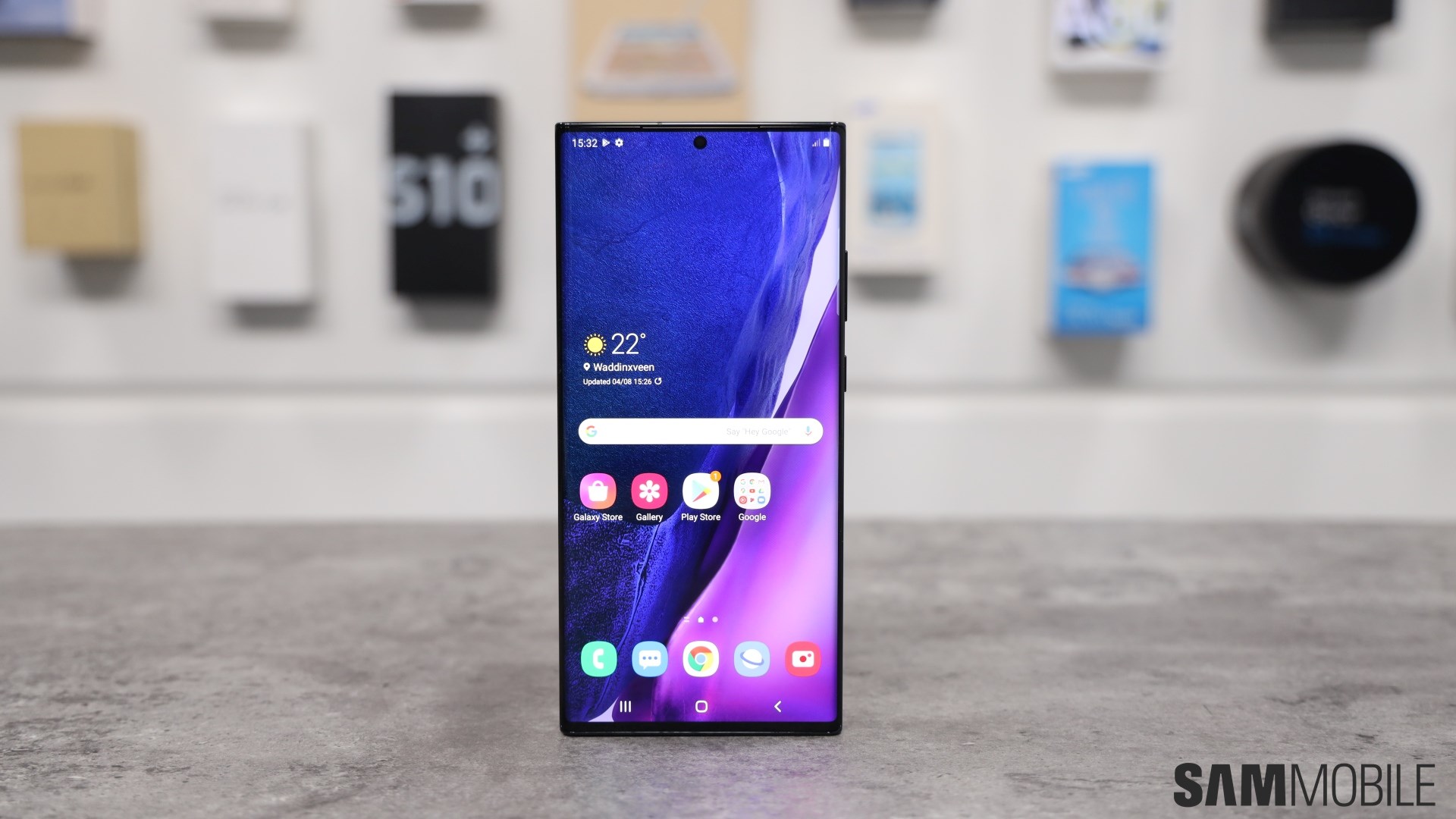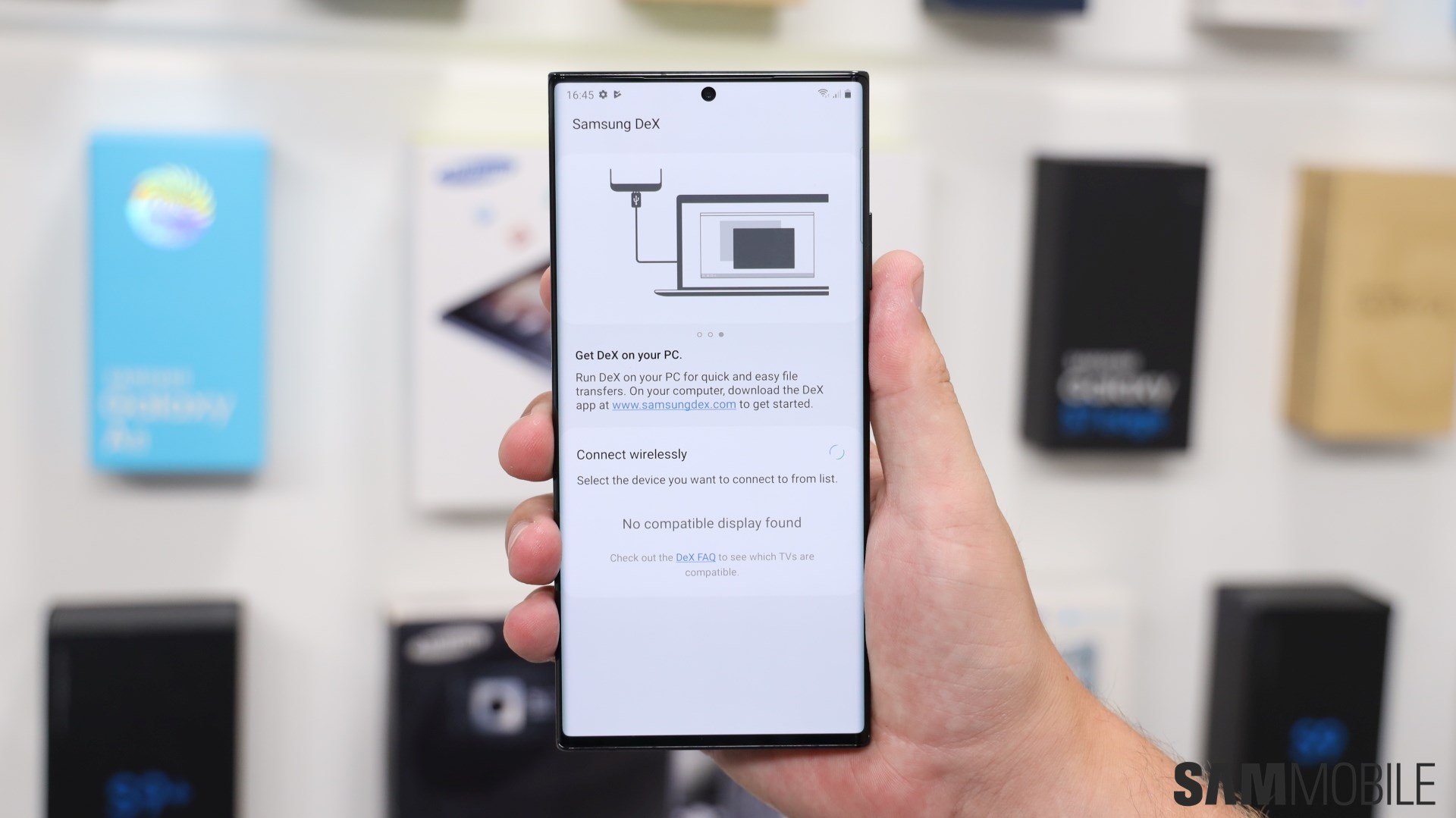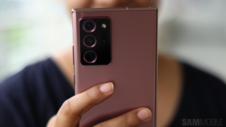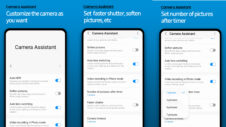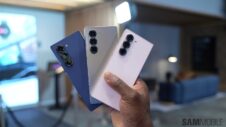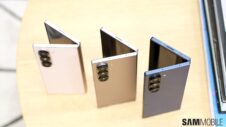At long last, Samsung’s heavily rumored and leaked Galaxy Note 20 and Galaxy Note 20 Ultra are official. The Galaxy Note 20 Ultra comes with many of the same features that made the Galaxy S20 Ultra so exceptional, like a 120Hz display, a periscope zoom camera, and a 108MP primary rear camera. The Note 20, meanwhile, gets some Galaxy S20 features but isn't a full-fledged flagship.
Faster S Pen, new air gestures, and improved Samsung Notes functionality
The S Pen, which resides on the left side of the device, has received some major upgrades this time around. First, there's the lower latency: 26ms on the Galaxy Note 20 and 9ms on the Galaxy Note 20 Ultra, which should allow for smoother and more instantaneous input when you’re drawing, taking notes, or just using the S Pen to navigate the interface. Samsung has also improved the Note 10's Air Actions feature. Some Air Actions gestures now work everywhere and allow you to do things like returning to the home screen and taking a screenshot by flicking your wrist in a certain way.
Samsung is also making a few changes to its Notes app to make the S Pen more powerful. You can now import PDFs into Samsung Notes, annotate and edit them with the S Pen, then save them in PowerPoint format for further editing. You can record audio as you highlight and annotate words and have them played back at the same time.
Furthermore, Samsung Notes now has a sync feature that can sync your notes across as many as nine devices, including a PC, tablet, and phone. Thanks to artificial intelligence, the Notes app can also straighten your handwriting. Last but not least, Samsung Notes now has a PC-like folder structure for more intuitive organizing of all your notes.
You will be using the S Pen on a 6.7-inch HDR10+ certified display if you buy the Galaxy Note 20 and a 6.9-inch HDR10+ certified display if you get the Note 20 Ultra. The Note 20 Ultra also features a 120Hz refresh rate, which further helps S Pen input feel smoother and faster. If you're wondering, the Note 20 Ultra is also limited to Full HD+ resolution at 120Hz, but it does come with a new adaptive refresh rate feature that changes the refresh rate according to the app you're using.
Samsung has reigned in the display curves, but you still get an edge display on the Note 20 Ultra, now with Gorilla Glass Victus/7 protection on the front and back. The regular Galaxy Note 20 has a flat display that works at the standard 60Hz refresh rate and makes do with Gorilla Glass 5 on the front and plastic on the back. The resolution maxes out at Full HD+, like the Note 10 from last year.
Improved camera capabilities, including up to 50x periscope zoom and laser autofocus
The Galaxy Note 20 Ultra is, as you would expect, the star of the show as far as imaging capabilities are concerned. It has a 108MP main camera assisted by a laser autofocus sensor for improved focusing compared to the Galaxy S20 Ultra. For zoom, it features a 12MP periscope lens that is capable of 50x zoom – that's half of what the S20 Ultra is capable of, but the Note 20 Ultra's zoom lens does have the benefit of a wider aperture (F3.0) that should let in more light.
The Galaxy Note 20 has the same camera setup as the Galaxy S20: A 12MP F1.8 main camera, a 12MP F2.2 ultra-wide camera, and a 64MP telephoto camera capable of 30x hybrid zoom. The ultra-wide camera is the same on the Note 20 Ultra as well, and this time around, the selfie cameras on both models are also the same: A 10MP sensor that supports Dual Pixel autofocus and can record 4K selfie videos.
The camera app’s Pro mode has received a major boost in capabilities. The Note 20 and Note 20 Ultra allow the user to select which of the phone’s three microphones are used for recording sound and also use Bluetooth and USB mics, while a zoom slider makes zooming in on things much easier (which is a major issue on Samsung’s Pro mode on existing devices).
8K video recording is on-board, and this time, you can select a 21:9 aspect ratio for a more cinematic feel and also record 8K videos in Pro video mode. 21:9 can be selected for other video resolutions as well and is a welcome addition, as it will make videos you shoot actually fit the phone’s display instead of showing black bars on the sides. Unfortunately, 8K video recording is still limited to 24 frames per second.
Exynos 990 and Snapdragon 865+ depending on market
Unfortunately, our fears have been confirmed: The Galaxy Note 20 and Galaxy Note 20 Ultra are powered by the same Exynos 990 chip that is found inside the Galaxy S20 lineup. Markets like the US, China, and South Korea get the Snapdragon 865+ instead of the Snapdragon 865, so customers buying the Exynos variant will once again be paying the same amount of money despite not getting the best version of the device.
Both the Snapdragon and Exynos models are paired with 8GB of RAM on the LTE and 5G Note 20 variants and 8GB and 12GB respectively on the LTE and 5G Note 20 Ultra variants. Yes, the lower RAM is another downgrade compared to the Galaxy Note 20 Ultra, a theme that shows up multiple times in the spec sheet. The Note 20 comes with 128GB or 256GB of non-expandable internal storage, while the Note 20 Ultra comes in 128GB, 256GB and 512GB flavors for the 5G variant and 256GB and 512GB options for the LTE variant. It also supports up to 1TB microSD cards.
The Galaxy Note 20 and Note 20 Ultra are equipped with 4,300 mAh and 4,500 mAh batteries respectively. The Galaxy Note 20 Ultra has the biggest battery of any Note flagship yet, although it's 500 mAh less than what you get on the Galaxy S20 Ultra. Both models support 25W super fast charging and Samsung claims that the batteries can gain over 50% charge in just 30 minutes. 15W fast wireless charging and 9W reverse wireless charging is common across the two phones.
One UI 2.5 with Android 10 out of the box, wireless DeX
The Galaxy Note 20 lineup runs Android 10 with One UI 2.5 out of the box. Samsung has partnered with Microsoft to offer three months of free Xbox Game Pass Ultimate subscription to pre-order customers. Xbox Game Pass Ultimate is based on Microsoft's Project xCloud cloud gaming service and will allow you to play Xbox games right on your phone or tablet from September 15.
Samsung has also improved the Link to Windows functionality. Microsoft’s Your Phone app now has improved copy and paste between Galaxy smartphones and PCs, and later this year, Your Phone will also allow Galaxy Note 20 and Note 20 Ultra users to run up to six mobile apps on their Windows PC.
Samsung DeX has now gone wireless and can connect to any TV that supports screen mirroring. You will be able to use the TV as a second screen while continuing to use your phone as the primary display if you so wish. It’s unclear if wireless DeX will come to existing Galaxy devices through a software update at this time, but we certainly hope it does and will let you know either way.
Other Galaxy Note 20 and Note 20 Ultra specs include Wi-Fi 6, Bluetooth 5.0, NFC, and a USB 3.2 Type-C port. There’s no headphone jack, which shouldn’t come as a surprise to anyone, though the stereo speakers are still present, complete with AKG tuning and Dolby Atmos support. Both phones are IP68 certified for dust and water resistance. The Note 20 Ultra also has UWB technology, which will let you share files and media by simply pointing your phone at another device.
The Galaxy Note 20 Ultra will go up for pre-order today, August 5, and will hit retail shelves on August 21. It will be available in Mystic White, Mystic Bronze, and Mystic Black; as usual, the color options will vary by market. Check out how much you will have to pay to get yourself a Galaxy Note 20 Ultra over here.
